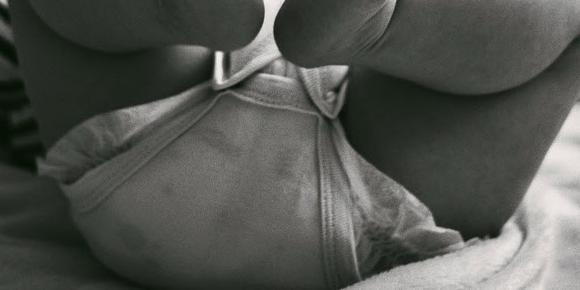
For adults, taking an internal temperature is easy. Whether you have an oral, forehead, or ear thermometer, you just place the sensor where it needs to be and wait. Even young kids get the hang of this pretty easily–so taking a toddler’s temperature can be pretty straightforward (especially when they know there’s a chance they get to stay home from school). But when you have to take a newborn’s temperature, things can get a little more complicated.
That’s because newborns don’t have the fine motor skills or basic understanding to, for example, hold a thermometer under their tongue for 30 seconds. As a result, parents have to use other methods to take an infant’s temperature.
The Best Way to Take a Newborn’s Temperature: Using a Rectal Thermometer
The most common and reliable way to take a newborn’s temperature is with a rectal thermometer. These thermometer types are designed to read the internal temperature of a person within the rectum. Even inexpensive rectal thermometers can be quite reliable and accurate, making them an easy addition to your medicine cabinet.
To take your infant’s temperature rectally, follow these basic steps:
Position your newborn so that they are lying down on your lap. You want them on their tummy while you take their temperature.
Place a small amount of petroleum jelly on the end of your thermometer.
Then, place a small amount of petroleum jelly on your baby’s anus.
Slide the thermometer into the anus to a depth of one-half inch. (For baby’s over the age of six month or so, an inch may be more appropriate.) On most thermometers, a half-inch is just deep enough that the silver tip or sensor is no longer visible.
The thermometer should slide in easily. If there is any resistance, stop immediately and consult with your pediatrician.
If you’re using a digital thermometer, leave it in until it beeps. This will usually take about ten seconds or so.
Remove the thermometer and record the reading.
Be sure to wash the thermometer thoroughly after use.
A temperature of 100.4 degrees fahrenheit or above is considered to be a fever. When babies have fevers–especially newborn babies–it’s important to contact your pediatrician as soon as possible.
For babies 0-3 months: If their fever is above 100.4 degrees, consult with your pediatrician's office first but you may be referred to urgent care or the ED immediately for further management.
For babies over 3 months old: If there is a fever, consult with your pediatrician's office first but you may be referred to urgent care or the ED immediately for further management
Thermometers to Use (and to Avoid)
While taking your baby’s temperature rectally is the most effective and accurate method, it may not always be the most convenient. As a result, there are some other techniques or devices that parents often ask about. These other methods include:
Taking temperature by armpit
Taking temperature by ear
Taking temperature by forehead
Unfortunately, none of these methods are as accurate as taking temperatures rectally. At Children’s Healthcare Associates, we recommend that parents use armpit temperature for screening purposes only. If your child presents a non-normal temp on an armpit thermometer, take a rectal temp to get an accurate reading. (We typically only recommend this screening method if your baby is fussy or otherwise uncooperative.)
We do not recommend using ear or forehead thermometers for babies. At these young ages, these thermometers are not accurate and can lead to false readings.
Are There Ways to Make Taking an Infant’s Temperature Easier?
Some parents may be intimidated by the notion of taking their child’s temperature, especially if the temp must be taken rectally. Following some of these tips may make the process easier and safer:
Use a digital thermometer. These days, digital thermometers are relatively inexpensive and accurate.
Get a second digital thermometer for rectal temps. Do not use the same thermometer for oral and rectal temperature taking, no matter how thoroughly you may have cleaned it. Put a clear label on each thermometer and maybe even store them in different places.
Clean the tip of the thermometer before and after each use. You can use soap and water or sanitizing alcohol or a combination of both.
Make sure the tip stays in place when taking your child’s temperature. Never leave your baby unattended while you take their temp.
You should take your baby’s temp whenever you think they might be ill or have a fever. For example, if your newborn is particularly fussy for no apparent reason or they feel warm to the touch, it may be a good idea to take their temperature.
Ask Questions and Get Help
Even though temperature is not the only indication of your baby’s health, it can be a sign of illness, infection, or other health troubles. As parents, you want to make sure you never ignore your baby’s high temperature or fever.
So if you have any questions about how to take your baby’s temp, it’s vital to ask. Your pediatrician can show you the best way to take a rectal reading or alternatives you might be able to use.
Contact Children’s Healthcare Associates today to talk to a pediatrician about the best ways to take a newborn’s temperature.
